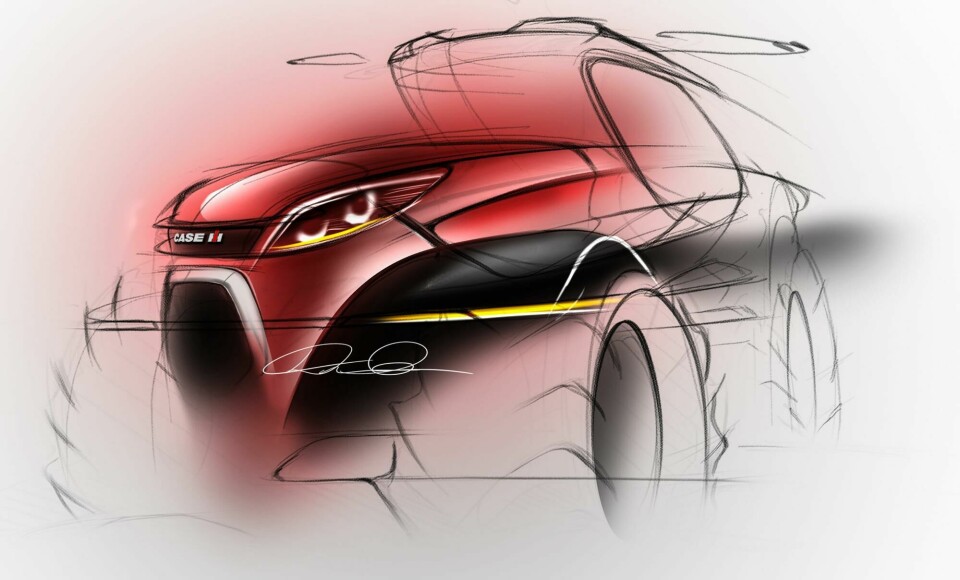
The Designers Pt2: David Wilkie, CNH Industrial
Talking through the unique challenges of truck and tractor design with CNH’s design director
“Tractors can be stylish as well…”
There’s no reason why tractors need to look as they’ve always done. In our world the products don’t go very fast, so we look for other inspiration, whereas in the automotive world most concepts are inspired by speed, although I know that’s changing. In the case of our Buffalo combine concept it was about being out in the countryside and fields in a vehicle that’s really tough and well put-together, and which has this feeling that it knows what it wants to do.
We definitely can’t just sell style. We can only sell good design, and it’s normally linked to a good [technical] change. Some of these tractors cost €200,000, more than a Ferrari, so you want them to look and feel good. They have to last a long time. Big farms will use them and then pass them on to smaller farms. It’s the same with trucks. Designs have to be longer-lasting than cars. These products work all day in the field whereas a car is often driven and then stopped repeatedly. I don’t think there are many cars that are driven with the frequency of a commercial aircraft. However, combine harvesters are similar when the season is right.

Sketch of a tractor for Case
Since March 2014 when I was brought in, our design centre looks after all the brands within CNH Industrial. Under Fiat, there had always been an agricultural equipment design centre in Chicago which also worked with Fiat’s central styling centre in Turin (Iveco was within Fiat) but afterwards, everything non-automotive was moved over to CNH Industrial. The big advantage is we now have an overview of all the products. Sometimes you’d find great ideas in one product which could possibly be applied to another one, but in the past nobody could see both.

Sketch of an Iveco Crealis bus
Before we become autonomous and no longer need people in the cabin, the biggest thing to consider with tractors is maximum visibility. You need to be able to see where your wheels are and all your attachments, so you can work well and safely. The wheels are massive, at least 30 inches. The wheels on tractors are an area I’d like to get more involved in. While the wheels today are big and wide – making the stance fantastic – there is no design to the parts within the wheels, and there is only one major supplier that supplies everybody. No-one seems to want to pay a premium for decent wheels for trucks. Most of our vehicles do go on the road, and we already have ‘follow-me’ vehicles where one tractor is manned and the others follow. Autonomous vehicles make more sense in agriculture than they do on the road.

CNH Industrial design team discuss colours
Colour and trim had been done before in the truck world but never in the professional way we do it today. We did some sketches for the New Holland marque with no branding on them, to check they could be recognised without a logo. It’s our ‘down the field’ graphic and a long way down! That’s why we get involved in very bold graphics. Part of the advantage of working in the CV world is that we don’t have all the rules that constrict the automotive industry, with pedestrian impact and airbags everywhere. We have the latter on trucks and are introducing them for concept tractors, but tractors go so slowly. Rollover protection and things dropping on the roof – the rock test – are important, though.
For a young designer CNH Industrial is a great place to begin and stay. Some designers are not so keen, because they want to design Maseratis and Ferraris. However, those that do come in and work with us on internships often find it’s probably more interesting. We don’t just work on the surface. We have to find opportunities to genuinely change these vehicles, and ways to convince our engineering platform teams and brand people that good design makes a difference.

Concept sketch for a Magirus emergency vehicle
Designers have a lot more power in automotive, as design sells. You can change the line below, to get the line you want [above]. Here you have to fight very hard to do that, but it’s a great school as it teaches designers the tough side of the business and I think that can make them a stronger designer. There’s also definitely more chance to shine and more opportunity to change the products, due to the fact that we’re quite new within the business.

Iveco is one of a host of CNH Industrial brands
I learn so much by seeing how other designers do things. I was project manager on the 1999 Marc Newson 021C concept car for Ford, and how he got involved in the detail really rubbed off on me, which is why we sometimes use those references in our mood boards. I was at Ghia back then and my role was just to make the interior happen. As a car designer I’d always learned that you start with the big picture – make a sketch and gradually get into the detail – but Newson was the exact opposite, starting with the detail. It’s like he wanted to draw the eye first in a portrait.
Sometimes we have too many specialists who know too much, which makes them recycle things they already did. Often there are very good reasons why you shouldn’t be changing things, but occasionally not. I’m here now and want to make a difference. I don’t want these guys and girls here with me to just be changing a radius on something we’ve already done, I want to do more than that.




